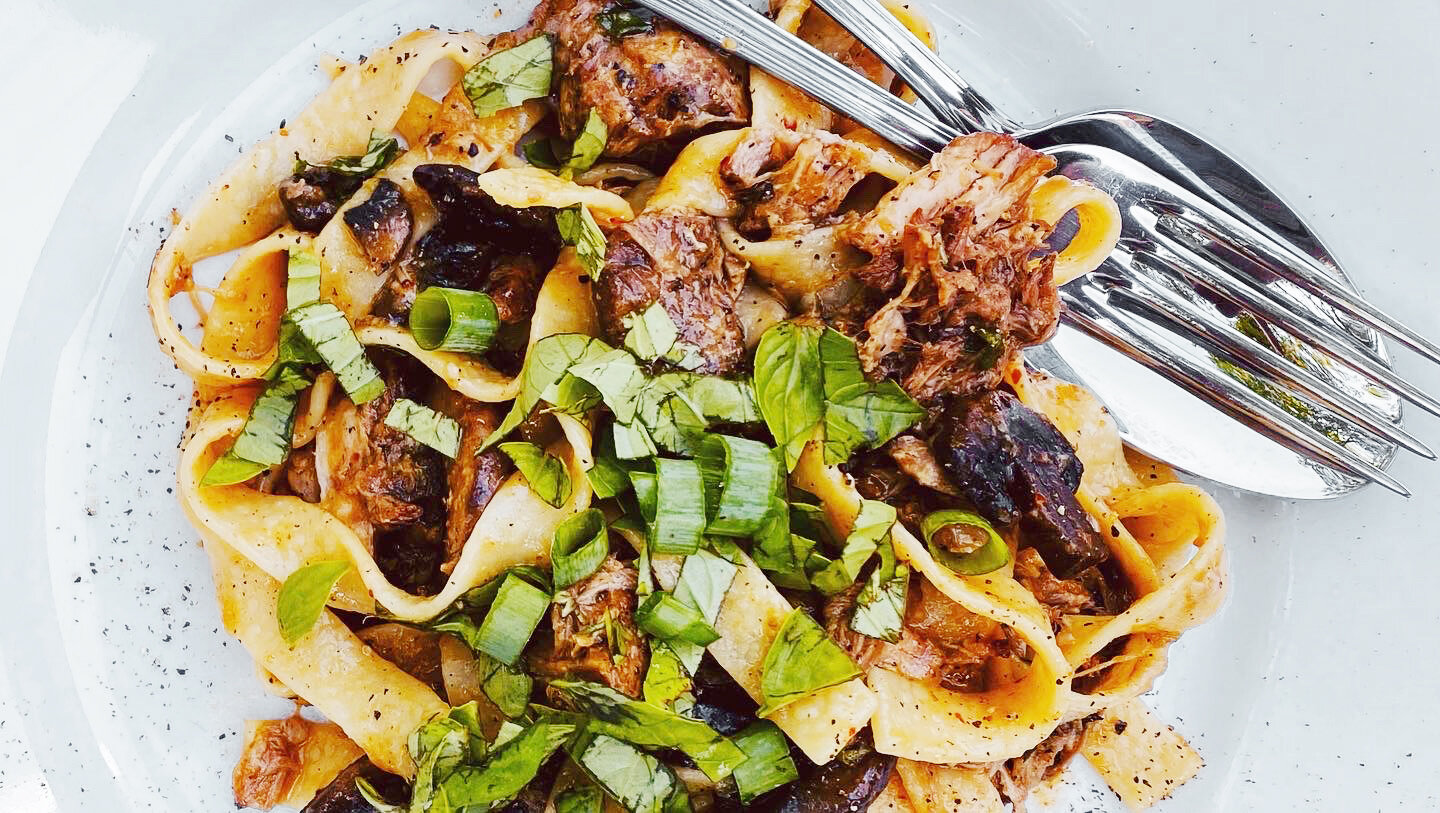Braised Pork Ragù w/ Mushrooms & Tagliatelle
Ragù or ragoût - does it really matter if it tastes good?
One is Italian and the other is French. Both are stew-like and saucy, and both usually involve some form of meat. Ours has pork and dances over thick, tender tagliatelle (or it’s wider sibling, papardelle). So let’s go with the Italian: ragù. This is a very modern take on ragù al cinghiale - a hearty wild boar dish that you can find on most menus in Italian hill country between Florence and Rome. We are using pork shoulder in the form of “country style ribs” (which are not ribs at all) and mushrooms and fish sauce to make up for the strong flavor of boar - all balanced by a healthy dose of citrus, basil, and sweet peppers. This dish is teaming with umami flavor and rests nicely on a chewy, wide noodle.
Braised Pork Ragù
Materials & Methods
“Country style ribs” are just thin cuts of pork shoulder and very inexpensive. This cut of meat is traditionally used for pork carnitas and cooks all day on the stove for flavor and tender, fall-apart texture - the same reasons we are using it in this dish. The smaller cuts allow it to cook more quickly than a whole pork shoulder. They are ideal for slow-cooked, weeknight meals. Season the meat up to 24-hours in advance and let it sit in the fridge to all the salt time to migrate to the center of the meat.
Mushrooms, red onion, and garlic serve as our vegetables - you can also include bell pepper to sweeten the dish. It’s shown as optional in the recipe. The vegetables cook down in the olive oil and pork fat before liquid is added to deglaze the pot.
Deglazing is just a fancy word for loosening all the brown bits stuck to the bottom of the pot. It lifts them (and all their flavor) up into the dish. The liquids we choose are another opportunity to add flavor to our food. In this case, we use lime juice, soy sauce, and rice wine vinegar to balance out the meatiness of the pork and mushrooms. We are also using fish sauce, which helps make up for the missing strong flavor of wild boar. Don’t worry, it will smell very funky when first added, but that will mellow into a very earthy, balanced flavor as the fish sauce cooks.
Braising is a very simple technique of cooking something on low heat with water over a long period of time to soften it and extract as much flavor as possible. In this case, we are using not only the flavorful liquids added to deglaze the pan, but also some water. We want just enough to barely cover the pork. It will cook for about an hour with the lid on - and then another hour open to allow some of the liquid to evaporate. This is how we turn pork shoulder into a ragù.
Pre-braising: pork “ribs” nestled into the liquid with our vegetables and lots of flavor.
Post-braising: the pork is broken down, bones removed, and much of the liquid evaporated.
Pasta is cooked until al dente and added along with a little pasta water. The starch in the pasta water helps thicken the liquid into a sauce and the under-cooked pasta will continue to cook in the pot, absorbing some of the liquid.









